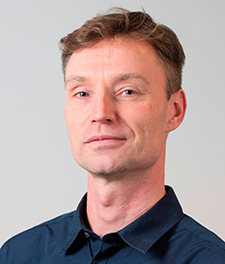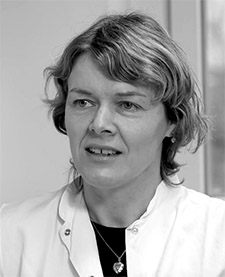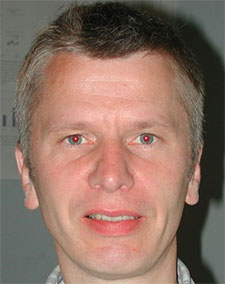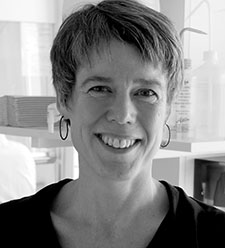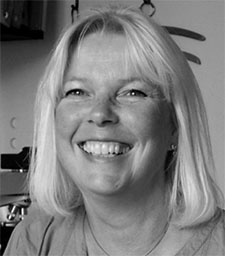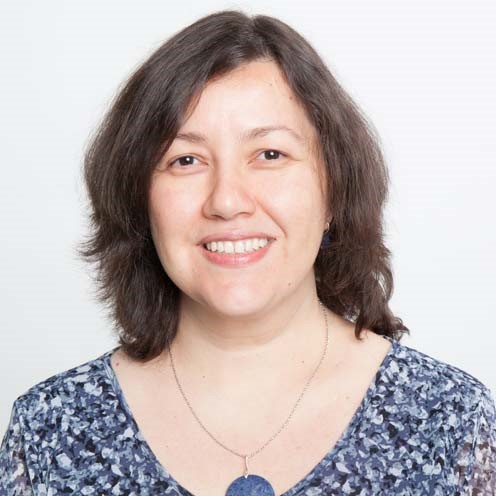Cell Biology and Physiology
In the Section for Cell Biology and Physiology, our research is aimed at deciphering the molecular and cellular bases of human diseases and genetic disorders as well as physiological adaptations in response to environmental challenges. Our work reaches from genome research, structure and function of cells, membrane transport, metabolism and cellular signaling networks over physical activity to the development, structural organization and function of tissues and organs.
Martin Werner Berchtold / Calcium Signaling Lab
Soren Tvorup Christensen / The Cilia Group
Jacob B. Hansen / Metabolic Regulation Lab
Karsten Kristiansen / Laboratory of Genomics and Molecular Biomedicine
Nadja Møbjerg / Møbjerg Lab
Ivana Novak / Signaling and Transport in Epithelia
Lotte Bang Pedersen / The Cilia Group
Per Amstrup Pedersen / Membrane Proteins Group
Stine Falsig Pedersen / The pH group
Henriette Pilegaard / Pilegaard Lab
Lone Rønnov-Jessen / Epithelial-Stromal Interaction Lab
Jakob G Knudsen / Knudsen Lab
Mirna Perez-Moreno / Epithelial Cell Biology Lab
Kristian Agmund Haanes / The Sensory Biology Group
| We direct our research efforts toward the physiological processes of sensory nerves, placing special emphasis on pain-transmitting neurons associated with the trigeminal ganglion. These neurons utilize common biological pathways for signal transmission, adaptation, and protective mechanisms. Our current research focuses on the pathophysiology of migraine pain and the accompanying sensory disturbances. In addition, we investigate the vasculature innervated by these sensory nerves, aiming to identify approaches that enhance resistance to ischemic injuries, such as those occurring in stroke events. | 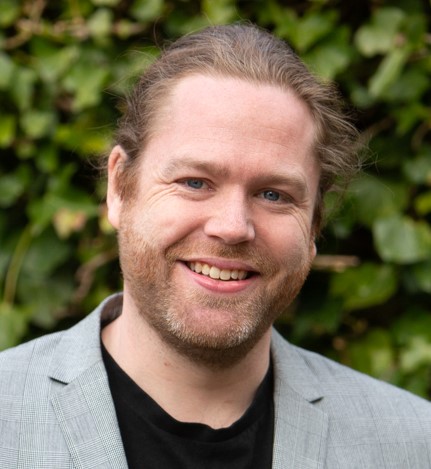 |
CBP is engaged in several research centers as well as excellence and synergy programs with focus on interdisciplinary research.
Center for Advanced Bioimaging (CAB) Denmark, UCPH (Ivana Novak)
https://cab.ku.dk/
NOVO Synergy program (Stine Falsig Pedersen)
SYNERGY: Investigating the potential of the protein-membrane co-structural dynamics.
The Advanced National Danish Technology Foundation (Per Amstrup Pedersen)
Industrial Biomimetics in Sensing and Separation (IBISS)
http://www.ibiss.dtu.dk/
The Innovation Foundation (Per Amstrup Pedersen)
Membrane Energy Technologies (MEMENTO)
UCPH Excellence Programme for Interdisciplinary Research (Søren Tvorup Christensen and Lotte Bang Pedersen)
Global genes, local concerns: Legal, ethical and scientific challenges in cross-national biobanking exploitation.
https://globalgenes.ku.dk/
Funding from the Danish Research Councils
Advanced Life in extreme Environments (ALIEN) (Nadja Møbjerg)
Calmodulin mutations causing sudden cardiac death (Martin Werner Berchtold)
Cellular Hubs (Stine Falsig Pedersen)
Ciliopathies and congenital heart disease: the role of novel ciliary proteins in signaling and cardiogenesis (Søren Tvorup Christensen and Lotte Bang Pedersen)
Coordination of PDGFRα and TGFβ signaling at the primary cilium (Søren Tvorup Christensen and Lotte Bang Pedersen)
Extrachromosomal circular DNA - origin and impact on eukaryotic genome stability (Birgitte Regenberg)
Impact of exercise training on hepatic ER stress (Henriette Pilegaard)
Mitochondrial quality control (Henriette Pilegaard)
Small Molecules of Metabolism and ATP responses in living cells (Ivana Novak)
Bachelor courses
Cellebiologi for biokemikere
7.5 ECTS, block 4 - Martin W. Berchtold
https://kurser.ku.dk/course/nbib14030u
Gene technology
15 ECTS, block 1 - Per Amstrup Pedersen
https://kurser.ku.dk/course/nbib10009u
Gene technology-nano
7.5 ECTS, block 1 - Per Amstrup Pedersen
https://kurser.ku.dk/course/nbib10010u
Grundlæggende Biovidenskab
7.5 ETCS, block 1 - Martin W. Berchtold
https://kurser.ku.dk/course/nbib13010u
Komparativ Anatomi
7.5 ECTS, block 2 - Nadja Møbjerg
https://kurser.ku.dk/course/nbia04004u
Menneskets Fysiologi
7.5 ECTS, block 2 - Henriette Pilegaard
https://kurser.ku.dk/course/nbia04035u
Signaltransduktion
7.5 ECTS, block 4 - Jacob B. Hansen
https://kurser.ku.dk/course/nbia07020u
Zoofysiologi
7.5 ECTS, block 4 - Nadja Møbjerg
https://kurser.ku.dk/course/nbia04054u
Almen biokemi
7.5 ECTS, block 4
https://kurser.ku.dk/course/nbia04031u
Almen cellebiologi
7.5 ECTS, block 1
https://kurser.ku.dk/course/nbia04036u
Almen Molekylærbiologi
7.5 ECTS, block 1
https://kurser.ku.dk/course/nbia04033u
Metabolisme og enzymologi
Biokemi 1, 15 ECTS, block 4
https://kurser.ku.dk/course/nbib13009u
Molekylærbiologi
15 ETCS, block 3
https://kurser.ku.dk/course/nbia08019u
Master’s courses
Advanced Cell Biology
7.5 ECTS, block 1 - Søren T. Christensen
https://kurser.ku.dk/course/nbik15006u
Cellular and Integrative Physiology
15 ECTS, block 3 - Ivana Novak
https://kurser.ku.dk/course/nbik14014u
Cellular Signaling in Health and Disease
7.5 ECTS, block 2 - Søren T. Christensen
https://kurser.ku.dk/course/nbik15009u
Developmental Biology
7.5 ECTS, block 2 - Lone Rønnov-Jessen
https://kurser.ku.dk/course/nbik10020u
Molecular Biotechnology
7.5 ECTS, block 4 - Per Amstrup Pedersen
https://kurser.ku.dk/course/nbik13017u
Principal Subject in Molecular Cell Biology
7.5 ECTS, blocks 1 and 3 - Berthe M. Willumsen
Cell Cycle Control and Cancer
7.5 ECTS, block 1
https://kurser.ku.dk/course/nbik10015u
Experimental Cell Biology
15 ECTS, block 4
https://kurser.ku.dk/course/nbik11009u
Human Genetics
7.5 ECTS, block 2
https://kurser.ku.dk/course/nbik15014u
Principal Subject in Immunology and Metabolism
15 ECTS, blocks 1, 2 and 4
The Human Microbiome
7.5 ECTS, block 1
https://kurser.ku.dk/course/nbik15016u
The Human Microbiome – Experiments
7.5 ECTS, block 4
https://kurser.ku.dk/course/nbik16000u
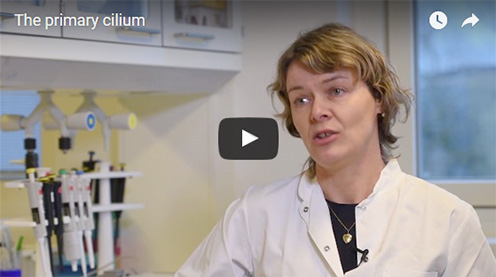 |
The primary cilium (Video) (2017) https://www1.bio.ku.dk/presserum/pressemeddelelser/the-primary-cilium/ |
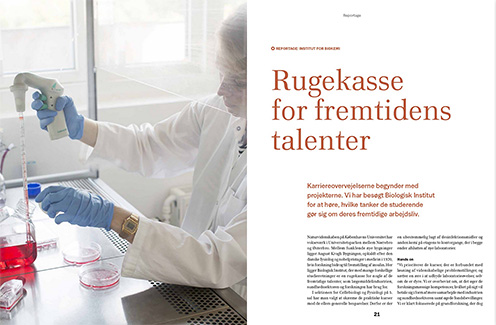 |
Rugekasse for fremtidens talenter (2016) |
 |
Primære cilier - cellernes ultimative antenner (Video) (2015) |
 |
Primary Cilia - the cells' ultimate antennae (Video) (2015) |
Contact
Cell Biology and Physiology
Universitetsparken 13
DK-2100 Copenhagen Ø, Denmark
SECTION HEAD
Professor
Søren Tvorup Christensen
Email: stchristensen@bio.ku.dk
Phone: +45 3533 0255
Mobile: +45 5132 2997



